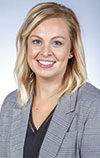According to the Cow Herd Appraisal of Performance Software (CHAPS, 2018) program, the average pregnancy rate for beef herds was 93.7% for cows exposed to bulls enrolled in the program. If you have a large percentage of cows open at preg check time, you may consider conducting a breeding soundness exam (BSE) on bulls to troubleshoot the issue. If bull infertility or injury was the problem, it may be more feasible to roll over open cows than culling those females for reasons outside their control. Likewise, a BSE conducted post-breeding season may also prove valuable to market a bull who failed a BSE this fall rather than overwintering that bull only to determine he failed prior to next year’s breeding season.
If a bull’s usefulness on your operation has expired, consider marketing him as soon as his duties for the year are over. Historical trends indicate that non-fed beef prices are the lowest during November/December when the market is flooded with cull cows that were preg checked near weaning in October. Seasonal highs often occur in August/September. Therefore, diligence to pull the bulls to meet your desired calving window (ideally less than 90 days) and early preg checking prior to weaning will help to ensure cashing in on seasonally higher prices for non-fed beef.
Now is also a great time to evaluate body condition status of bulls, as bulls frequently lose 100 to 200 pounds during the breeding season. Age and current condition influence nutritional requirements, so bulls should be managed in separate groups accordingly. While an all-forage diet is likely sufficient to meet requirements of mature bulls carrying adequate condition, young or thin bulls will likely need an additional supplement to regain body condition and meet added growth requirements.
Likewise, bulls should have access to a quality mineral and vitamin supplement year-round, as many play a key role in reproduction. Regardless of age, adequate feeder space (suggested a minimum of 2 feet per bull) is necessary to ensure all bulls can access feed at once when managed in a group setting. ![]()

-
Erika Lundy
- Extension Beef Program Specialist
- Iowa Beef Center - Iowa State University
- Email Erika Lundy







